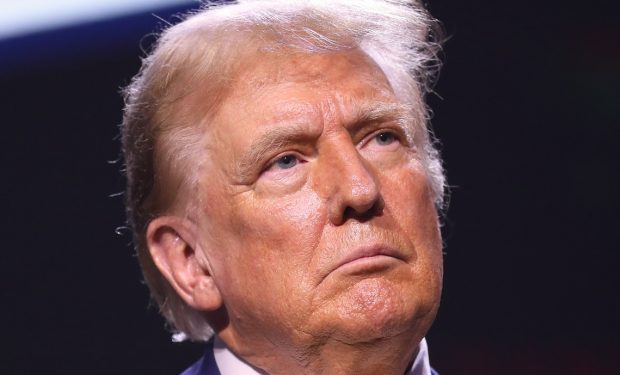GOP presidential nominee Donald Trump explained to Fox Business media personality Maria Bartiromo the way contemporary people consume media on their “little beautiful cell phones,” telling Bartiromo she had a “great product” and emphasizing to her that it’s not just on Fox.
Every clip that appears on any TV channel — as well as anything filmed at a rally, on the street, on a podcast, etc. — will find distribution through numerous platforms, Trump explained, assuring her that “Fox is a smaller part of it.”
Trump is talking about the powerful distribution networks run by Meta, Alphabet, ByteDance, and Elon Musk, including Facebook, Instagram, Google, TikTok, X and more. These are social media, search, and news aggregator apps that platform the news, distributing it beyond where it originates — and to new audiences.
Bartiromo’s show originates on Fox but you might see it on Facebook, or as Trump correctly if obtusely asserts: “you know, you see it on Fox, but when you really see it is all over the place.”
Trump goes on unintelligible rant: “Google, nobody called from Google. One of the things like doing a show like yours, your show, you know, you see it on Fox, but when you really see it is all over the place, they take clips of your show that you're doing right now with me and if… pic.twitter.com/jYP8Iyk6ZP
— Kamala HQ (@KamalaHQ) August 2, 2024
What Trump says about interconnectivity and distribution is essentially true, but he makes a cognitive leap and concludes that people seeing clips of him — even non-Fox watchers, since that’s not a prerequisite to view these clips — are “going to vote for me.”
While it’s true that clips of Trump, as he says, are shown on every internet platform no matter their origination point, that doesn’t mean viewers outside the core captive audience will approve of what they see — or that Trump’s message, now that it has finally reached beyond Fox, will have a positive impact elsewhere, as he assumes.
Reaching beyond Fox with a Fox interview is no longer a logistical challenge, yet winning over an MSNBC audience member with your Fox clip is a leap of a different order.
Trump speaks as though all content is equal and distribution is the only challenge, without acknowledging that the wrong content or message usually fails with certain audiences not because they didn’t see it before (distribution problem), but because they disagree with it (content problem).
The Kamala Harris campaign’s social media presence amplified the Trump-Bartiromo interview, for example — and it surely did not do so anticipating that people who saw it would, as Trump asserts, “vote for [Trump].”
Trump goes on unintelligible rant: “Google, nobody called from Google. One of the things like doing a show like yours, your show, you know, you see it on Fox, but when you really see it is all over the place, they take clips of your show that you're doing right now with me and if… pic.twitter.com/jYP8Iyk6ZP
— Kamala HQ (@KamalaHQ) August 2, 2024
Trump does acknowledge that these new gatekeepers are powerful — something he knows firsthand having been suspended in the past from Facebook and Twitter for distributing false information.
Trump warns near the end of the clip that Google, which — being a search engine — did not ban him (or information about him), is nevertheless in his crosshairs. Google will have a rocky future during a second Trump administration, Trump predicts.
Trump asserts that Google, which he perceives as biased and which distributes more news than any other internet information hub, has “been very irresponsible” and that he has a “feeling that Google is going to be close to shut down.”
He hates Google. They tell on him.
— Ron Dorland 🇺🇸 (@DorlandRon) August 2, 2024
